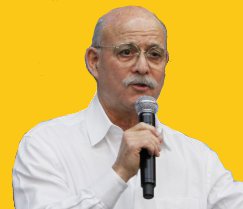The Third World Revolution
By Jeremy Rifkin; Facilitated by Walter Sorochan
Date Posted April 13, 2014 Updated September 22, 2021. Disclaimer
The ideas expressed in this article occurred before 2020 and the coronavirus pandemic. So the ideas are thoughtful but not up to date.
 Jeremy Rifkin has evolved
a new economic vision for the world based on connecting world resources
laterally [sideways] instead of vertically [up/down]. Professor Rifkin's vision of a sustainable, post carbon economic era has been endorsed by the European Union and the United Nations and embraced by world leaders including Chancellor Angela Merkel of Germany, President François Hollande of France, and Premier Li Keqiang of China.
Jeremy Rifkin has evolved
a new economic vision for the world based on connecting world resources
laterally [sideways] instead of vertically [up/down]. Professor Rifkin's vision of a sustainable, post carbon economic era has been endorsed by the European Union and the United Nations and embraced by world leaders including Chancellor Angela Merkel of Germany, President François Hollande of France, and Premier Li Keqiang of China.
Riflin explains his visions in the videos below.
The Zero Marginal Cost Society - Jeremy Rifkin Length: 10:29 mns.
Source: Rifkin: Zero Marginal Society
Jeremy Rifkin: Leading the way to the third industrial revolution Length: 11:05 mns.
Source: Rifkin: Way to 3rd Revolution
Ripkin: The Energy Internet Length: 4:13 mns.
Source: Ripkin: energy internet
J. Rifkin on Climate change, global warming and solar future video: 54 mns. long
Source: Rifkin: Climate change 2013
So what is the Third Revolution?
Here is how Rifkin tells it: "First of all, it’s based on a new convergence of communication and energy. The Internet has been a very powerful communication tool in the last 20 years. What’s so interesting about it is the way it scales. I [Rifkin] grew up in the 20th century on centralized electricity communication that scales vertically. The Internet, by contrast, is a distributed and collaborative communication medium and scales laterally. We are in the early stages of a convergence of internet communication technology with a new form of energy that is by nature distributed and has to be managed collaboratively and scales laterally. We’re making a great transition to distributed renewable energy sources. And we distinguish those from the elite energies—coal, oil, gas, tar sands—that are only found in a few places and require significant military and geopolitical investments and massive finance capital, and that have to scale top down because they are so expensive. Those energies are clearly sun-setting as we enter the long end-game of the Second Industrial Revolution. Distributed energies, by contrast, are found in some frequency or proportion in every inch of the world: the sun, the wind, the geothermal heat under the ground, biomass—garbage, agricultural and forest waste—small hydro, ocean tides and waves." Waghorn: Third revolution 2011
Rifkin analyzes how he evolved his third revolution from different sources into sections which he refers to as five pillars:
- The EU has mandated a goal of 20 percent renewable energy by 2020. That means a third of the electricity has to be green.
- How do we collect distributed renewable energy?
- How do we store distributed renewable energy?
- How do we share green electricity with each other?
- How do we integrate transport into the TIR infrastructure?
These five pillars are only components. It’s when they are connected that we create the synergies that transform them into a seamless new infrastructure for a new economic paradigm for the 21st century.
We can’t stay in the Second Industrial Revolution of old electric grid and getting energy from fossil fuels and nuclear power which have become outdated as an infrastructure and have become gradually economically unaffordable and obsolete. These energies are costing more and more and do not work anymore. We need to bring the best entrepreneurial talent and scientific and technological know-how together, and work with local, regional, and national governments and their respective business communities and civil society organizations to transform the infrastructure of the global economy and prepare the world for the next great economic era. Rifkin's third revolution creates new jobs and evolves social-economic networks where people work together to share energy instead of fighting for resources. It is a new business model [paradigm] for doing business and providing wellbeing to all the world.
You can read more about all of this new transition by going to:
Jeremy Rifkin's Third Industrial RevolutionReferences:
Waghorn Terry, "Rifkin Jermey's Third Industrial Revolution," Forbes, December 12, 2011. Waghorn: Third revolution 2011
Jeremy Rifkin: Economist and energy visionary Jeremy Rifkin is senior lecturer at the Wharton School’s Executive Education Program at the University of Pennsylvania, president of the Foundation on Economic Trends in Washington, D.C., author of 19 books, and an advisor to the European Union and to heads of state around the world. He is the President of the TIR Consulting Group LLC, comprised of many of the leading renewable energy companies, electricity transmission companies, construction companies, architectural firms, IT and electronics companies, and transport and logistics companies. His global economic development team is working with cities, regions, and national governments to develop the Internet of Things (IoT) infrastructure for a Collaborative Commons and a Third Industrial Revolution.